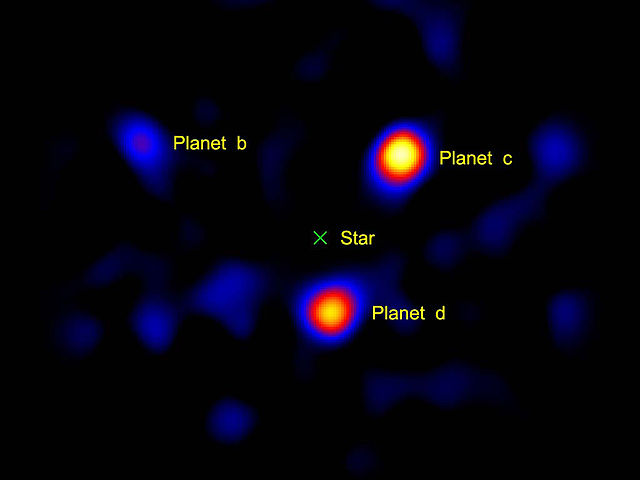
How can astronomers detect planets? Astronomers can detect planets by seeing how they dim their stars, how they pull on their stars, and how they filter the light coming from their stars.
So far, astronomers have detected 5,867 planets in 4,377 planetary systems. There are another 2,958 that haven’t been confirmed yet. That’ll bring the total up to 7,335. There are some stars that don’t have planets, but these are by far the exception. These might be rogue stars that have been created somewhere else in space and then floated to a new location. The way stars are created would mean that planets are almost always created. Stars are made when a cloud of gas and dust is pressed together by gravity and starts to clump together and then grow. When it reaches a large enough size and there is enough pressure, it ignites. It would be very unlikely for a star to be able to use all of the material in the cloud of gas and dust, and whatever is left over forms planets. There are some planets that don’t have stars, just like there are some stars that don’t have planets, but these were mostly knocked out of their original location. Astronomers estimate that there an average of 1.6 planets for every star. That is an awful lot of planets in our galaxy alone. So, how do astronomers find them.
The most common method is by filtering the light coming from a star. This method is called radial velocity or the Doppler method. Our telescopes detect the light coming from the star being analyzed and use a prism to split it into a spectrum. When the spectrum is enlarged, there are straight black lines that divide up the spectrum depending on what chemicals are on the surface of the star because different chemicals affect different wavelengths of light. Looking at this spectrum can show astronomers what a star is made of, but it can also show if there are any planets around it. If there is a planet orbiting the star, it will pull on the stars orbit and make it wobble so that it is moving towards and away from Earth. When it moves away from Earth, the light in the spectrum is closer to the blue wavelength and when it spins towards Earth, the light is closer to the red wavelength. This is the Doppler effect, and it shows if a planet is orbiting a star. However, this method only works for very large planets, like Jupiter.
There is a method called astrometry, which is similar to radial velocity, although it only looks at the wobble in the star with a telescope. The telescope being used has to fix the star being observed and then watch it over a period of time to see if it wobbles. This method only works if the telescope is in space (because of atmospheric interference), and very accurate. Modern space telescopes are very accurate at this, but it still only works on large planets because smaller planets don’t create enough of a wobble.
Another method is to look at how a planet blocks the light from a star. When a planet orbits in front of its star, it will very slightly dim the light the star emits. Although, again, this only really works on large planets because a planet like Jupiter only blocks 1% of our sun’s light.
Yet another method is called gravitational microlensing. Light travels in a straight line unless it is pulled by a force such as gravity. When light passes a large body in space, such as a star, it is bent off its trajectory as it goes past that star. If you look at a star in space and another star goes behind the first star, the light from the second star will bend as it passes the first star, creating a magnified image of the second star. This magnified image will be seen as a brightening of the first star. A computer on board a telescope can register this magnification. If there is a planet in front of the first star as well, there will be a second magnification and a second peak in light intensity.
There is another method that the James Webb Space Telescope is using. It is hard to see planets because their host star is so many times brighter. This method works by using something called a coronagraph. The telescope mirrors are made up of thousands of tiny pieces and they are able to move independently. By doing this, they can filter out the incredibly bright light coming from the star and just see the light being reflected by the planets.
As technology advances and AI systems become better at analyzing the data, it gets easier to detect planets around stars. It is also possible to analyze the chemical composition of the planets and see what their atmospheres are made of. These are amazing times. And this is what I learned today.
Try these next:
Sources
https://www.skyatnightmagazine.com/space-science/gravitational-microlensing
https://en.wikipedia.org/wiki/Exoplanet
https://science.nasa.gov/exoplanets/how-we-find-and-characterize
https://en.wikipedia.org/wiki/Lists_of_planets
https://www.esa.int/Science_Exploration/Space_Science/How_to_find_an_extrasolar_planet
https://www.sciencefocus.com/space/on-average-how-many-planets-are-in-orbit-around-each-star
Image By NASA/JPL-Caltech/Palomar Observatory – http://www.nasa.gov/topics/universe/features/exoplanet20100414-a.html, Public Domain, https://commons.wikimedia.org/w/index.php?curid=10016784
